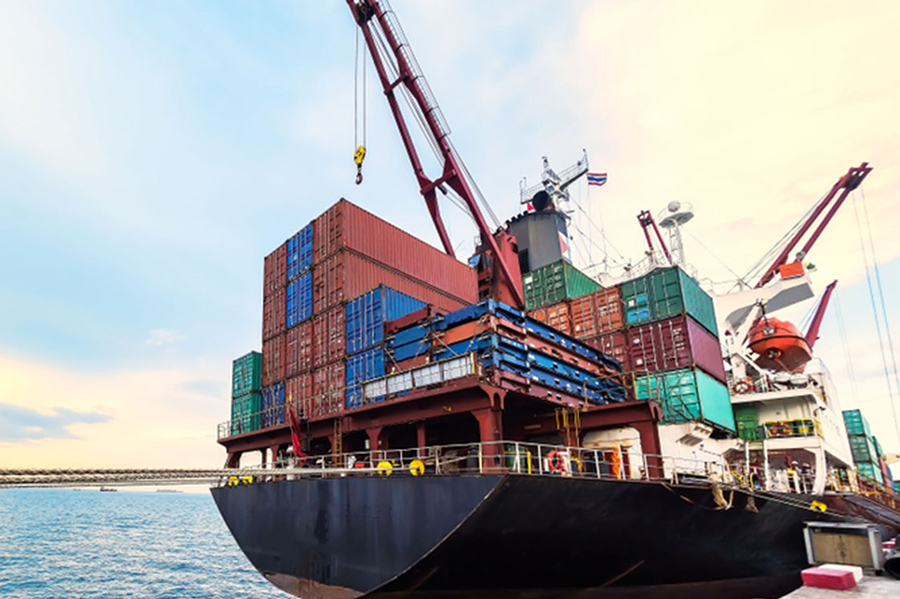Flaring Trade Tensions
June 27, 2019
Tariffs have dominated headlines since January 2018 when the U.S. first announced tariffs on imported solar cells and washing machines. With several additional rounds of U.S. tariffs, China responded with retaliatory tariffs. In December, the trade spat suddenly paused, and through the first four months of 2019, it looked increasingly likely that the U.S. and China might strike a trade deal.
However, in May, the trade war quickly re-escalated as an eleventh round of trade talks failed to produce an agreement. In short order, the U.S. raised tariffs from 10% to 25% on over $200 billion of Chinese imports and threatened 25% tariffs on the remaining $300 billion of Chinese imports, beginning mid-July. While the 2018 tariffs mostly targeted narrowly traded items that didn’t affect consumers very much, this next round will impact consumers directly, hitting items they purchase every day like luggage, backpacks, building products, and baseball gloves. China retaliated with 25% tariffs (up from 5-10%) on $60 billion of U.S. goods, beginning June 1. The U.S. also banned Chinese telecom giant Huawei from doing business with the U.S., to which China responded by threatening to restrict exports of rare earth minerals (used in rechargeable batteries, magnets, and cell phones, just to name a few) and to blacklist foreign companies.
Why tariffs?
Initially, tariffs were considered a negotiation tactic to deal with trade deficits. However, the tariff dispute persisted. Then it was believed that tariffs were about better terms of access to Chinese markets and protection of intellectual property. But why single out China? Most developing economies struggle with protecting intellectual property. A ranking of the treatment of intellectual property by the U.S. Chamber of Commerce places China in about the middle of the pack globally—and ahead of some other notable U.S. trading partners like Brazil. Most recently, we’ve seen the threat of tariffs applied unconventionally to non-economic targets—namely, Mexico’s immigration policy. Those tariffs were narrowly avoided, but we continue to see an evolution in the use of trade as a leverage point to support something very fundamental—nationalism.
Many will ascribe the tariff tactics as specifically Trumpian. That may or may not be so. There has been broader bipartisan appeal on much of the tariff strategy which would suggest that perhaps there are greater nationalistic roots taking hold. This could be the result of slowing economic growth and widening economic inequality that the U.S. has experienced since the 2008 Great Financial Crisis.
Is there an end in sight?
It’s uncertain when a resolution might be reached. Presidents Trump and Xi could make a breakthrough when they meet on June 29 at the G20 summit, but expectations are low.
If these tariffs are just a symptom of something more foundational, we should not expect to see them abate any time soon. Rather, moments of quietness will be followed by quick flare-ups in international trade discussions. This could add quite a bit of sporadic volatility and uncertainty to the financial markets, like we saw with the May stock market sell-off.
What does this mean for investors?
Corporate supply chains will try to adjust to the new environment, seeking out robust ways of conducting commerce to avoid future disruption. This takes time and experimentation. If an inward nationalistic focus is at the heart of the next stage of foreign policy, it is very possible that global growth could slow further and become more fragmented. It is likely that the U.S. administration will be sensitive to market responses to slowing growth. Any negative market reactions could mean a war of words in the press targeting erroneous Fed policy as the reason for market pullbacks. Ultimately, neither the President nor the Fed want to experience the blowback of unhappy financial markets, and both will more than likely do whatever it takes to make markets happy, even if it means reversing policy course for a time.
This leaves investors with a very uncertain outlook. If the trade war continues to escalate, inflation pressures will build and economic growth will decelerate, both of which could negatively impact stocks. However, something as simple as the U.S. and China striking a more conciliatory tone could send stocks shooting higher again. Markets will overreact in the short term both positively and negatively.
In times like these, it’s important that investors stay focused on their longer-term goals and not get side-tracked by intermittent news of tariff disputes. As an investor, your time horizon is an important anchoring point for determining the best portfolio for you. Riding out market volatility in the near team has historically rewarded investors in the long term. Furthermore, investors would do well to mind valuations and not get distracted by sudden price declines or inexorable price increases. Though stock and bond prices may meander temporarily, they will ultimately come back to their fundamentals. Only time will tell how the trade dispute will be resolved, so we believe staying diversified due to the wide range of possible outcomes is prudent.
We will continue to monitor these events as they evolve both in terms of how they impact the potential long-term growth trajectory of markets and how market speculation impacts valuations. These are all things we will consider as we position our portfolios to have a well-diversified exposure to economies with higher growth potential and reasonable valuations.
8685222-06-19

Leave a Reply
Want to join the discussion?Feel free to contribute!